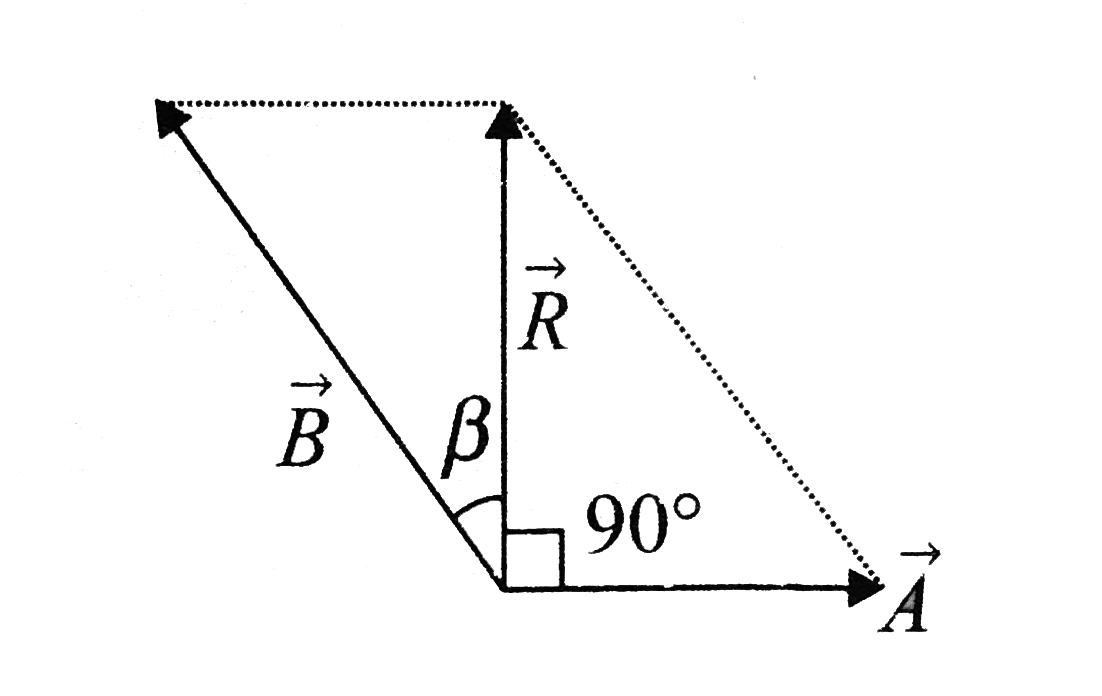The magnitude of the vector product of two vectors →A and →B may beSolution in Punjabi
greater than AB
equal to AB
less than AB
equal yo zero
Step by step video & image solution for The magnitude of the vector product of two vectors vec A and vec B may be by Physics experts to help you in doubts & scoring excellent marks in Class 11 exams.
Topper's Solved these Questions
- BOOK - MODERN PUBLICATIONCHAPTER - Moment of InertiaEXERCISE - Example323videos
Moment of Inertia
- BOOK - MODERN PUBLICATIONCHAPTER - Gravitational potential and potential energyEXERCISE - Exercise17videos
Gravitational potential and potential energy
- BOOK - MODERN PUBLICATIONCHAPTER - Motion of SatellitesEXERCISE - Exercise25videos
Motion of Satellites
Similar Questions
The moment of inertia of a thin rod about an axis passing through its centre and perpendicular to its length is 1,200gcm2. If length of the rod is 20 cm, find its moment of inertia about an axis passing through its one end and perpendicular to its length.
01:21View SolutionWhat do you understand by gravitational field?
01:59View SolutionDefine orbital velocity of a satellite. Obtain an expression for orbital velocity of a satellite.
02:32View SolutionFind the magnitude of two vectors →a and →b having the same magnitude and such that the angle between them is 600 and their scalar product is .
02:02View SolutionTwo vector →A and →B have magnitudes A=3.00 and B=3.00. Their vector product is →A×→B=−5.00ˆk+2.00ˆi.
What is the angle between →A and →B?01:52View SolutionThe resultant of two vectors →A and →B is perpendicular to the vector →A and its magnitudes is equal to half of the magnitudes of vector →B (figure). The angle between →A and →B is
 02:30View Solution
02:30View SolutionAssertion: If vec(A).vec(B)= vec(B).vec(C ) , then vec(A) may not always be equal to vec(C ) . Reason: The dot product of two vectors involves consine of the angle between the two vectors.
01:52View SolutionAssertion: If dot product and cross product of vec(A) and vec(B) are zero, it implies that one of the vector vec(A) and vec(B) must be a null vector. Reason: Null vector is a vector with zero magnitude.
04:23View SolutionThe resultant of two vectors vec A and vec B perpendicular to the vector vec A and its magnitude id equal to half of the magnitude of the vector vec B . Find out the angle between vec A and vec B .
01:12View SolutionMagnitude of resultant of two vector →A and →B is equal to 2. angle between two vectors is 180∘ if ∣∣→A∣∣=3 then find ∣∣→B∣∣
01:56View Solutionदो वेक्टरो →A और →B का परिणामी वेक्टर →A पर अभिलंबवत है तथा इसका परिमाण वेक्टर →B के परिमाण का आधा है वेक्टरो →A तथा →B के बीच कोण ज्ञात कीजिये ।
02:09View Solution→A तथा →B दो सदिशों है →A×→B का परिमाण है -
02:02View Solution→Aand→B are the two vectors such that ratio their dot product to magnitude of their cross product is 1√3. Then the angle between →Aand→B is
03:12View SolutionThe resultant of two vectors vec A and vec B is perpendicular to the vector vec A and its magnitude is equal to half the magnitude of vector vec B . What is the angle between vec A and vec B ?
02:32View SolutionThe vector product of two vectors vec A and vec B is zero. The scalar product of vec A and (vec A + vec B) will be
03:15View SolutionTwo vector →A and →B have equal magnitudes. Then the vector →A+→B is perpendicular :
03:14View Solution

